I am using a 6V 6W solar panel with the Particle Boron microcontroller with a battery pack. I want to ensure that the voltage supplied by the solar panel does not surpass 6.2V, as that is the max Vin rating for the microntroller. What is a good and simple way to go about this without sacrificing too much power from the solar panel?
The question suffers from lack of specification and this has mislead people providing comments and answers.
It appears from the original question and subsequent discussion that the system may be able to be made 'safe' to operate directly from the PV panel if power connection is made to the Boron in a non standard manner. This depends on what combination of PV panel, battery, charger and load is actually used. Provision of a circuit diagram and information on battery specification, charging and use will allow better answers.
The following answer is probably correct technically but needs confirmation re the above aspects.
Summary:
- IF power is connected at a point within the Boron then the "Boron + PV panel + single cell LiIon battery" form a complete solution for battery charging and operation and no external regulator is required.
Unfortunately, the creator's of the Boron do not appear to have not utilised the high voltage input capability of the main onboard regulator.
If you are not willing to connect to the technically sound but non specified power input point on the Boron then the comments and methods below apply, but this should not be needed.
Shouldn't be needed, but ...
A "proper" LiIon charger and LiIon single cell battery will isolate the 'Boron' from PV panel voltage concerns.
If a battery is not used or battery voltage may track panel voltage then use of an LDO rather than a clamp regulator will minimise regulator power dissipation.
If you care about PV panel energy efficiency then a switching regulator based charger is recommended.
______________________
Assume:
You do not say how the PV panel / battery pack / Boron interconnect, what the battery chemistry is or how and the battery is charged. If the battery is a single cell LiIon battery them the Boron can be operated from it directly from the Li+ pin and, as long as the battery is correctly managed then you do not need to be concerned about the panel effects on the processor.
Neil suggests a clamp regulator - and I have implemented TL431/TLV431 + shunt transistor ones in real world devices. However, in this case, if you did wish to operate the Boron from the PV panel directly I'd recommend an LDO (low dropout regulator) that could easily withstand the maximum PV panel voltage (plus a safety margin) and supply the Boron module at a suitable voltage. Your PV panel is rated at 6 Watts. A shunt regulator must dissipate all the energy that is not used by the load. In this case that will be about 6 Watts - pending information to the contrary.
An LDO will dissipate V x I = (V_pv - Vload) x I_load.
Even at minimal panel load and so maximum V_pv that's still about
(7.7-3.3) x Iload or about 4.4 mW per mA of load.
Even at say 100 mA load that's 440 mW.
The shunt regulator dissipates Vshunt x (I_PV- I_load)
or say 5 x (0.9 - 0.1)
= 4 Watts at 100 mA load in bright sun.
With a "proper" LiIon charger the charger converts the panel's voltage and current to suitable values for the battery, the Boron is connected to the battery via Li+ and never sees panel over voltages.
Use of a non-switching regulator, a nominally 3.6V battery (4.2V absolute maximum) and up to 930 mA at 6.6V panel output.
The low cost TP5100 LiIon charging modules available from Asia should meet this need well.
Example only - Typical TP5100 LiIon one or two cell charger .
2A max. 18V in max.
US0.57, free shipping! -
Ludicrous :-).


